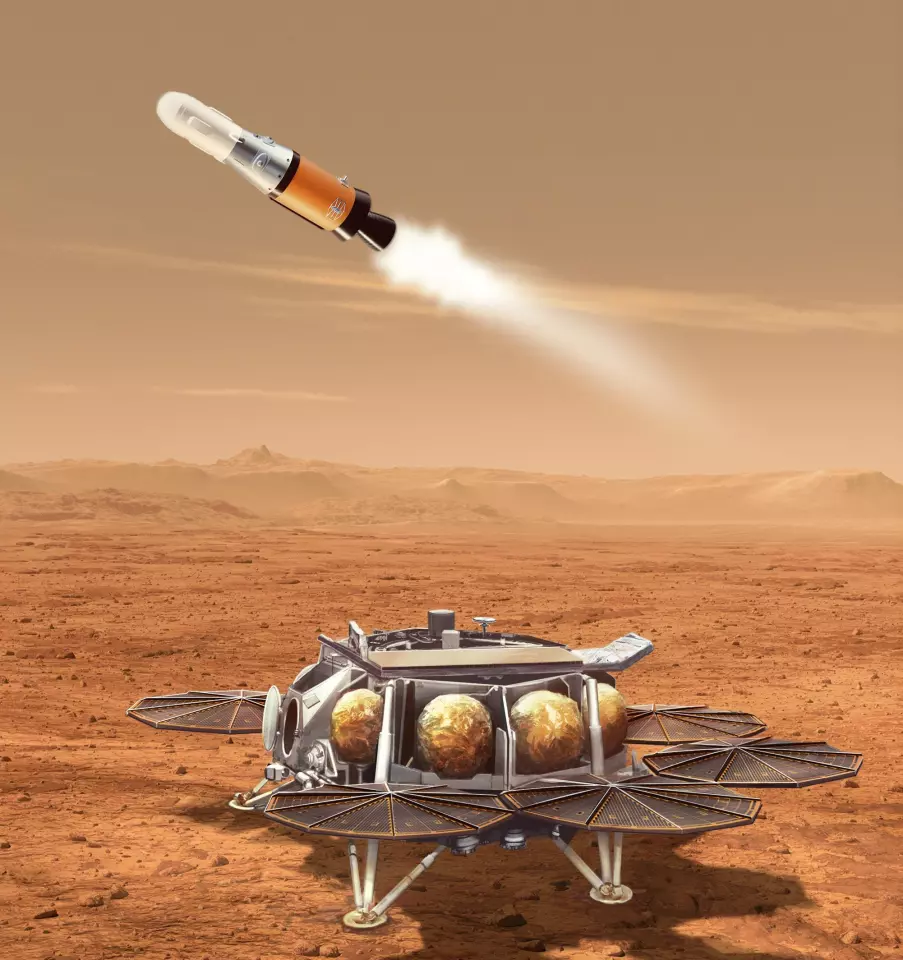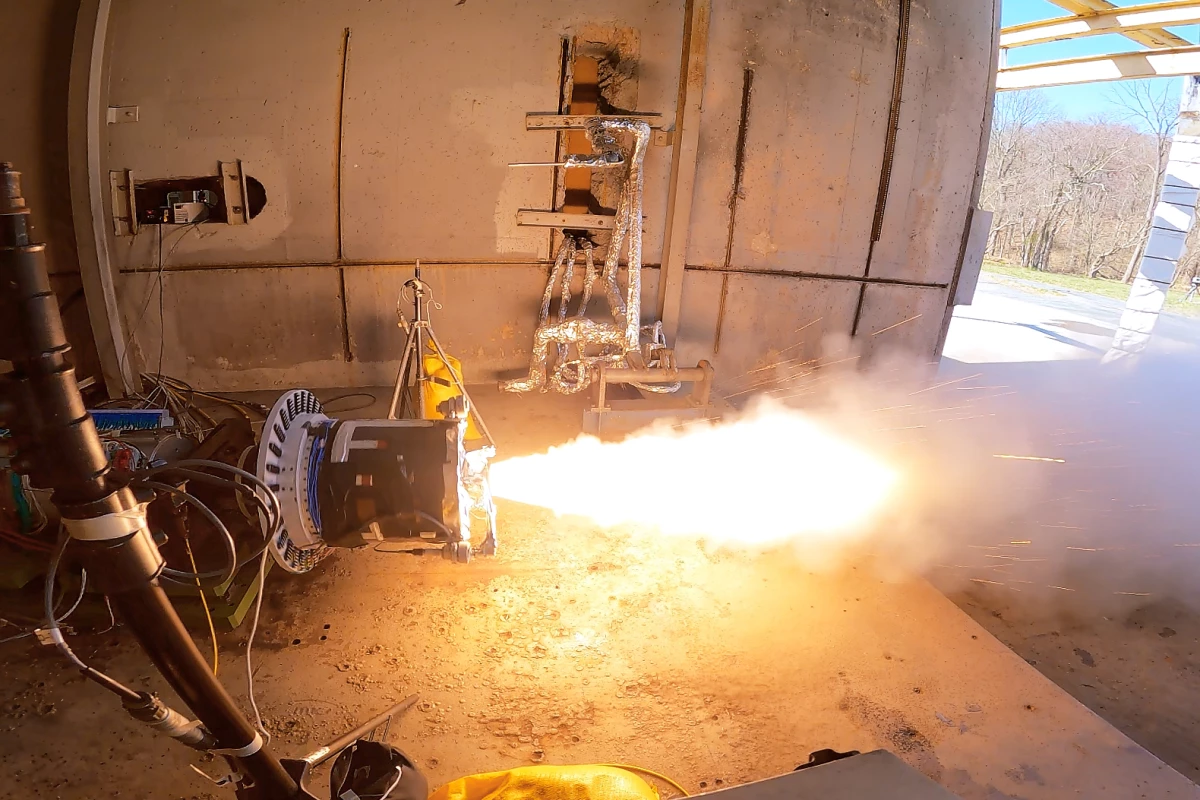In anticipation of one of history's most ambitious planetary missions, NASA has successfully tested the two solid rocket motors that will be used to help return the first geological samples from Mars to Earth for laboratory analysis.
The Mars Sample Return mission is attempting a staggeringly complex task – and one that many people don't realize has been underway for years. NASA's Perseverance Mars rover is currently roaming the surface of the Red Planet, collecting soil and drilling samples as it goes. These are being sealed in special tubes and dropped along the way like containers for a bit of Martian geocaching.
These sample tubes will be collected later by Perseverance and two backup helicopters, which will return the samples to a retrieval lander with NASA's Mars Ascent Vehicle (MAV) aboard. A special arm on the lander will place the sample cache inside the small solid-fueled rocket. This, in turn, will blast the sample cache into orbit around Mars where it will rendezvous with an ESA orbiter, which will bring the payload back to Earth by about 2030.

Since the MAV is the first rocket design to lift off from another planet and it will have to do so autonomously a hundred million miles from Mission Control after traveling for months through the vacuum and cold of space, NASA is naturally keen to make sure it performs as advertised.
As part of this, the space agency test fired the MAV's two rocket motors, SRM1 at Edwards Air Force Base in California, and SRM2 at the Northrop Grumman facility in Elkton, Maryland, respectively.
SRM1, which is the first stage and launches the vehicle from the lander, is the larger of the two motors and was tested in a vacuum chamber cooled to -20 °C (-4 °F). The reason for these conditions was to test the motor's supersonic nozzle that forms part of the gimbaled thrust vector control system because such components don't normally encounter such cold.
Meanwhile, the SRM2 was not only subjected to the same temperatures, but spun to 200 RPM, which is what will occur in flight.
According to NASA, the motors passed their qualifications and the next phase of testing continues.
"This test demonstrates our nation has the capacity to develop a launch vehicle that can successfully be lightweight enough to get to Mars and robust enough to put a set of samples into orbit to bring back to Earth," said MAV Propulsion Manager Benjamin Davis at NASA’s Marshall Space Flight Center. "The hardware is telling us that our technology is ready to proceed with development."
Unfortunately, these tests come in the shadow of the uncertain future of the entire sample return mission. A recent US Senate committee has demanded that NASA keep the total costs of the mission to not exceed US$5.3 billion, while the space agency has estimated the development costs alone at $9 billion. If the Senate refuses to allocate further funds or NASA cannot find the right economic cuts, those Martian samples could be sitting on the Red Planet for quite some time.
The video below shows the rocket motor test.
Source: NASA






